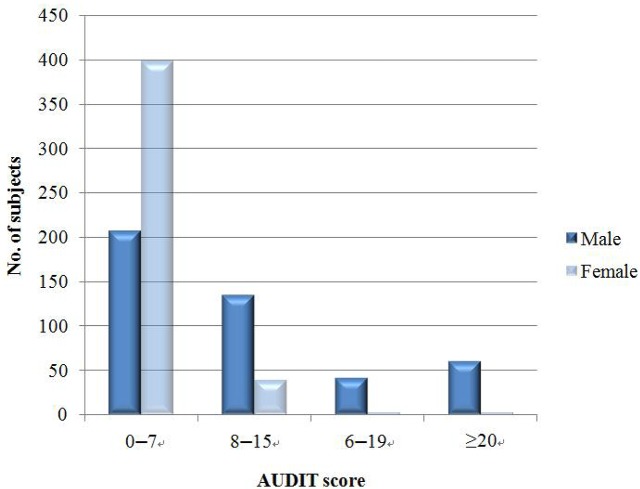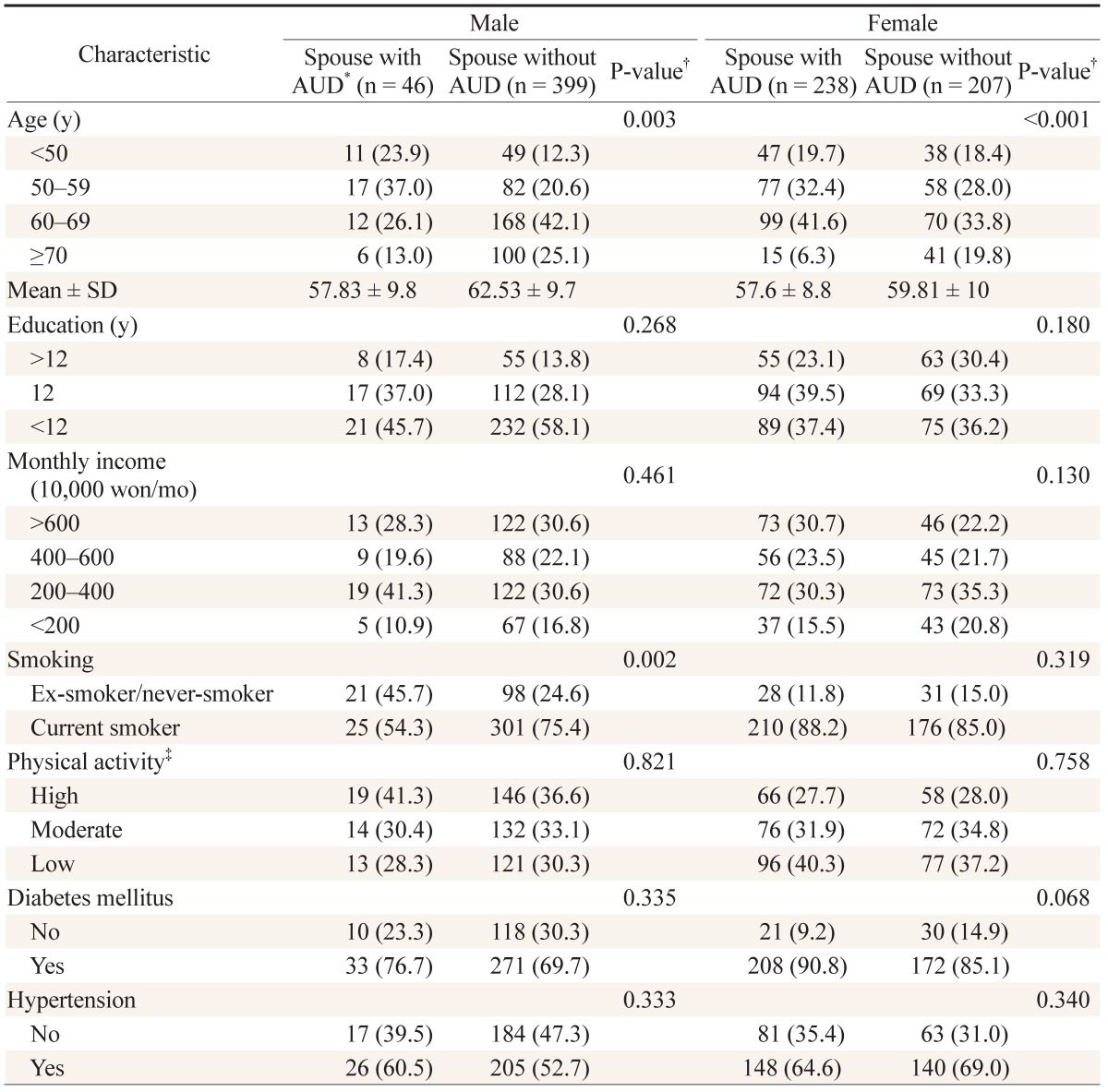1. Thun MJ, Peto R, Lopez AD, Monaco JH, Henley SJ, Heath CW Jr, et al. Alcohol consumption and mortality among middle-aged and elderly U.S. adults. N Engl J Med 1997;337:1705-1714. PMID:
9392695.


2. Kim HT, Chun SS, Joung SH, Yun ME. Nutrient intake status of Korean drinkers: analysis of data from Korea National Health and Nutrition Examination Survey (KNHANES), 2011. J Korean Diet Assoc 2013;19:343-355.

3. World Health Organization. Global status report on alcohol and health. Geneva: World Health Organization; 2011.
4. McCrady BS, Epstein EE. Addictions: a comprehensive guidebook. New York: Oxford University Press; 2013.
5. Hasin DS, Stinson FS, Ogburn E, Grant BF. Prevalence, correlates, disability, and comorbidity of DSM-IV alcohol abuse and dependence in the United States: results from the National Epidemiologic Survey on Alcohol and Related Conditions. Arch Gen Psychiatry 2007;64:830-842. PMID:
17606817.


6. McCrady BS. Treating alcohol problems with couple therapy. J Clin Psychol 2012;68:514-525. PMID:
22504611.


7. Halford WK, Bouma R, Kelly A, McD Young R. Individual psychopathology and marital distress: analyzing the association and implications for therapy. Behav Modif 1999;23:179-216. PMID:
10224948.


8. Leonard KE, Eiden RD. Marital and family processes in the context of alcohol use and alcohol disorders. Annu Rev Clin Psychol 2007;3:285-310. PMID:
17716057.



10. McKay JR, Maisto SA, Beattie MC, Longabaugh R, Noel NE. Differences between alcoholics and spouses in their perceptions of family functioning. J Subst Abuse Treat 1993;10:17-21. PMID:
8450569.


11. Liepman MR, Nirenberg TD, Doolittle RH, Begin AM, Broffman TE, Babich ME. Family functioning of male alcoholics and their female partners during periods of drinking and abstinence. Fam Process 1989;28:239-249. PMID:
2659389.


12. O'Farrell TJ, Birchlery GR. Marital relationships of alcoholic, conflicted, and nonconflicted couples. J Marital Fam Ther 1987;13:259-274.

13. Kelly AB, Halford WK, Young RM. Couple communication and female problem drinking: a behavioral observation study. Psychol Addict Behav 2002;16:269-271. PMID:
12236464.



14. Olson DH. Circumplex model of marital and family systems. J Fam Ther 2000;22:144-167.

15. Oh JY, Yang YJ, Kim BS, Kang JH. Validity and reliability of Korean version of International Physical Activity Questionnaire (IPAQ) short form. J Korean Acad Fam Med 2007;28:532-541.
16. Babor TF, Higgins-Biddle JC, Saunders JB, Monteiro MG. The Alcohol Use Disorders Identification Test: guidelines for use in primary care. 2nd ed. Geneva: World Health Organization; 2001.
17. Kim JS, Oh MK, Park BK, Lee MK, Kim GJ, Oh JK. Screening criteria of alcoholism by alcohol use disorders identification test(AUDIT) in Korea. Korean J Fam Med 1999;20:1152-1159.
18. Olson DH. Family assessment and intervention: the circumflex model of family system. Philadelphia: Haworth Press; 1989.
19. Lim JH, Lee KR, Oh MK, Kwak KW, Yoon BB. A study of reliability and validity of FACES III. J Korean Acad Fam Med 1990;11:8-17.
20. Franklin C, Streeter CL, Springer DW. Validity of the FACES IV Family assessment measure. Res Soc Work Pract 2001;11:576-596.

21. Kim YS, Sunwoo S, Kim B, Park H-K, Ok SW, Cha D. Reliability and validity of family communication scale in the FACES IV Package: Korean Version. J Korean Fam Relat Assoc 2012;17:241-258.
23. White BB. Gender differences in marital communication patterns. Fam Process 1989;28:89-106. PMID:
2703053.


24. O'Farrell TJ, Choquette KA, Cutter HS, Birchler GR. Sexual satisfaction and dysfunction in marriages of male alcoholics: comparison with nonalcoholic maritally conflicted and nonconflicted couples. J Stud Alcohol 1997;58:91-99. PMID:
8979217.


25. Seoul National University College of Medicine. The epidemiological survey of mental disorders in Korea 2011. Seoul: Ministry of Health and Welfare; 2011.
26. Blazer DG, Wu LT. The epidemiology of alcohol use disorders and subthreshold dependence in a middle-aged and elderly community sample. Am J Geriatr Psychiatry 2011;19:685-694. PMID:
21785289.



27. Morgen CS, Bove KB, Larsen KS, Kjaer SK, Gronbaek M. Association between smoking and the risk of heavy drinking among young women: a prospective study. Alcohol Alcohol 2008;43:371-375. PMID:
18223292.



28. McCreary LL, Dancy BL. Dimensions of family functioning: perspectives of low-income African American single-parent families. J Marriage Fam 2004;66:690-701.














